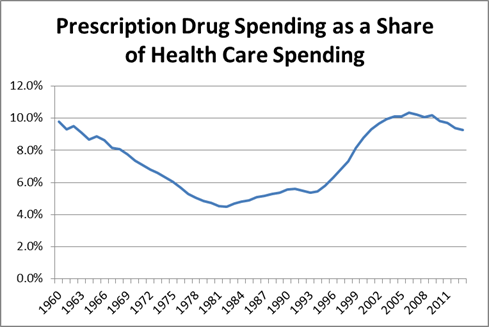Article • Dean Baker’s Beat the Press
Fact-based, data-driven research and analysis to advance democratic debate on vital issues shaping people’s lives.
Center for Economic and Policy Research
1611 Connecticut Ave. NW
Suite 400
Washington, DC 20009
Tel: 202-293-5380
Fax: 202-588-1356
https://cepr.net
Those folks at the Wall Street Journal are really turning reality on its head. Today it ran a column by Robert Ingram, a former CEO of Glaxo Wellcome, complaining about efforts to pass “transparency” legislation in Massachusetts, New York, and a number of other states. This legislation would require drug companies to report their profits on certain expensive drugs as well as government funding that contributed to their development.
Ingram sees such laws as a prelude to price controls. He then warns readers:
“There is no surer way to bring pharmaceutical innovation to a halt in the U.S. than letting governments decide how much companies can charge for their products or harassing them into lower prices. It also represents a fundamental misunderstanding of how pharmaceutical research works. Scientific discoveries involve trying and failing, learning from those failures and trying again and again, often for years.”
Ingram bizarrely touts the “flowing pipeline of new wonder drugs spurred by a free market,” which he warns will be stopped by “government price controls.” This juxtaposition is bizarre, because patent monopolies are 180 degrees at odds with the free market. These monopolies are a government policy to provide incentives for innovation. Mr. Ingram obviously likes this policy, but that doesn’t make it the free market.
Of course there are other ways that the government can finance research and development, such as paying for it directly. It already does this to a large extent. At the encouragement of the pharmaceutical industry it spends more than $30 billion a year on mostly basic research conducted through the National Institutes of Health. It could double or triple the amount of direct funding (which could be contracted with private firms like Glaxo Wellcome) with the condition that all findings are placed in the public domain.
This would eliminate all the distortions associated with patent monopolies, such as patent-protected prices that are can be more than one hundred times as much as the free market price. This would eliminate all the ethical dilemmas about whether the government or private insurers should pay for expensive drugs like Sovaldi, since the drugs would be cheap. It would also eliminate the incentive to mislead doctors and the public about the safety and effectiveness of drugs in order to benefit from monopoly profits.
It would be great to have an honest debate about the best way to finance drug research. The first step is to stop conflating government granted patent monopolies with the free market.
One important point that Ingram gets wrong in this piece is his claim that, “Prescription drugs account for only about 10% of U.S. health-care spending, according to the Centers for Disease Control and Prevention. This percentage has not changed since 1960 and is projected to remain the same for the next decade.”
While spending on drugs is roughly the same share of health care spending as it was in 1960, this is a sharp recovery from the level of the early 1980s, when it was close to 5 percent. Furthermore, spending on pharmaceuticals rose by more than 10.0 percent in 2014, which means that currently they are growing rapidly as a share of total health care spending.

Source: Centers for Medicare and Medicaid Services.